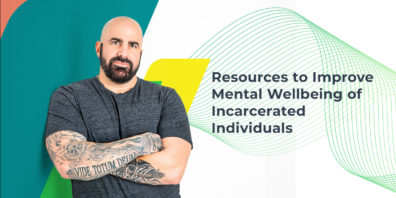Inmate Education: How to Find the Right Opportunity
junio 01, 2016
Inmate education, often referred to as “correctional education” or “rehabilitative programming” plays an important role in our country’s correctional facilities.
Based on statistics, much of the American correctional facilities are home to inmates having below average levels of formal education. Providing inmate education helps both the inmate and society, as it better prepares them for success after release.
Inmate education is offered in juvenile facilities, most American prisons as well as county jails and detention centers. The educational programming varies by location, however nearly every inmate has an opportunity to benefit from continuing their education while incarcerated.
America’s state and federal prisons hold upwards of 1.6 million people, many of whom are not serving life and will eventually join society once more.
There are many former inmates serving as proof that inmate education programs not only help reduce the rate of re-entry, but promote chances of becoming a positive and impactful member of society.
Types of Inmate Education Offerings
There are two main types of Inmate Education: Vocational and Academic. Most facilities offer opportunities for inmates to receive both types of programming.
Vocational Programs
This type of inmate education often includes on-the-job training opportunities such as electrical, landscaping, plumbing and other “live-work” jobs available depending on the facility.
Additionally, some facilities have additional in-house work programs like carpentry, A/V and technology work, and more. These programs are free.
Not all inmate education has to be completed within the facility. Depending on the inmate and the facility in which he resides, opportunities for off-site inmate education might be available. Studying at an outside institution is almost always at the cost of the inmate.
There are also opportunities for an inmate to pay for vocational training via correspondence. This is when an academic institution sends learning materials to the facility to be completed on site. This is also at the cost of the inmate, but is sometimes covered by the state or donations.
These vocational courses are very popular because they are less expensive but offer the same educational opportunities. Mail-in programs can run anywhere from a few hundred to a thousand or more dollars per program.
Academic Programs
This type of inmate education is usually offered in the form of GED classes. Inmates have the opportunity to earn their GED in place of a High School diploma. Once they pass the GED test, they can begin taking a variety of academic programs.
At the Federal level, correctional facilities often offer these programs free of charge. The courses are able to be offered for free because they are led by inmate-instructors.
Each education department differs from facility to facility, and certainly from state to state.
Many inmates have access to at least some, if not all, of the following academic programs:
- Writing and Publishing,
- Personal Finance,
- Spanish,
- Basic Math,
- Legal Basics,
- and more.
Inmates In College
Approximately 32 states offer some type of college courses to inmates. In 1992, a ban was placed on government funded Pell grants that were helping inmates pay for these classes.
Since the ban in 1992, these programs are used much less frequently because inmates and their families do not have any way to pay for them. Non-Profit Organizations have been founded to assist inmate education in many states. Some states do provide funds to offer better access to college courses.
The United States Departments’ of Education and Justice recently announced a pilot program that will open up the opportunity for some inmates to apply for the Pell grants once more, for the first time in nearly 24 years. It is being called the Second Chance Pell Pilot.
According to Lois Davis, a Senior Policy Researcher at RAND Graduate School, “Education is a relatively low-cost program you can provide to inmates. But, when you look simply at direct costs, we find that for every dollar invested in a prison education program it will ultimately save taxpayers between $4 and $5 in incarceration costs.”
So what does that mean? That means that tax dollars awarded to inmates through Pell Grants will end up saving taxpayers in the long run, because inmates who have the opportunity to receive education are at a much lower risk of re-entry.
Finding Inmate Education Programs
Learning more about the inmate education programs available can be done by reading the BOP brochure outlining all their inmate programs. Everything from literacy, parenting, wellness and more are offered through the Federal Bureau of Prisons.
Each individual facility may offer access to recreational activities to provide opportunity for healthy living. Correctional facilities often have libraries that include a variety of fiction and nonfiction books, legal materials for research and references, magazines and newspapers.
The goal of the BOP’s educational offerings is to help inmates to acquire literacy and marketable skills so they can obtain employment after release. You can learn more about inmate education as offered by the BOP here.
Posted In: Blog



